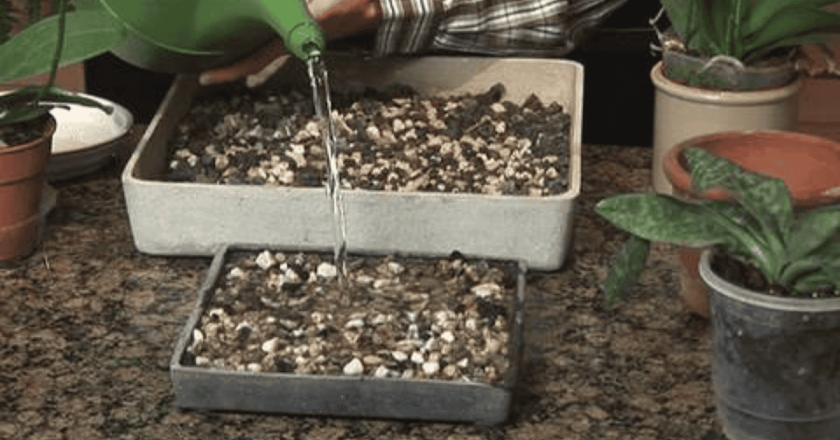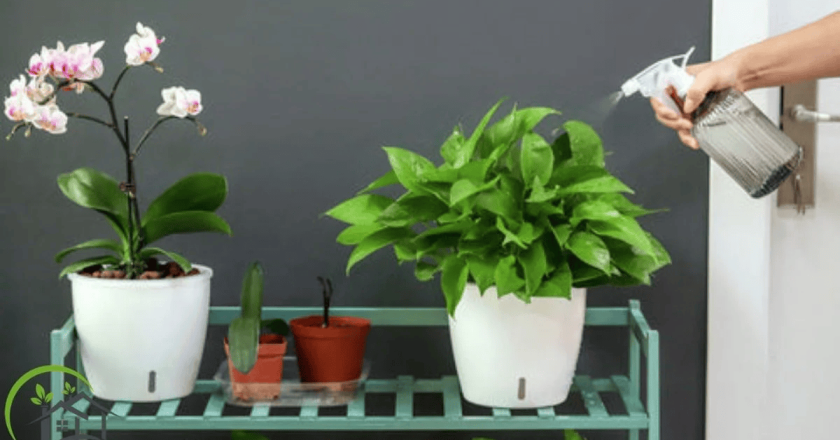Autumn is one of those seasons that feels both calm and restless. The air cools, the days shorten, and plants respond in ways that sometimes confuse even the most attentive gardeners. Leaves turn, growth slows, and suddenly you’re asking yourself whether you should still be watering as often, or if it’s already time to start preparing everything for winter.
That’s where Seasonal Plant care steps in. Understanding what plants need in autumn isn’t just about keeping them alive; it’s about helping them transition smoothly from the heat of summer into the dormancy of winter. And in 2025, with weather patterns that feel less predictable than ever, giving plants a thoughtful routine matters even more.
This guide covers everything: from autumn plant care basics to a full seasonal garden checklist, plus detailed fall gardening tips for both indoor and outdoor greenery. Think of it as a practical roadmap, but written with the little nuances most guides skip over.
Why Seasonal Plant Care Matters
Plants don’t live on a straight line of growth. They respond to cycles — temperature, light, and rainfall. Ignoring those cycles can leave them vulnerable. Seasonal Plant care ensures you’re in sync with the rhythm of nature.
In autumn, especially, plants begin to store energy rather than spend it. That means less push toward new leaves and flowers, more focus on roots and resilience. Whether you’re managing seasonal care for indoor plants or adjusting your outdoor plant care fall routine, autumn is really about helping them rest and prepare.
And if you’ve ever noticed how quickly a peace lily droops when neglected, or how a money tree sulks when the room gets too drafty, you’ll know plants don’t keep quiet about what they need. (Here’s a detailed peace lily care guide and a money tree guide for reference.)
A Seasonal Plant Guide for Autumn
Let’s break it down into the main categories of autumn care.
1. Watering Adjustments
One of the first mistakes people make is continuing their summer watering habits. In cooler months, soil dries out more slowly. Overwatering is easy. The best approach for seasonal plant watering is to test soil moisture more often instead of sticking to a fixed schedule.
-
Indoor plants: Water less frequently, but don’t let them go bone dry unless they’re succulents.
-
Outdoor plants: Pay attention to rainfall. Natural patterns might take care of most needs.
For example, a Christmas cactus doesn’t need constant moisture — and autumn is when you want to slightly reduce watering to encourage blooming later. This Christmas cactus care guide explains why timing matters so much.
2. Feeding and Fertilizing
Autumn is not the season for heavy fertilizing. Growth slows down. But that doesn’t mean you should ignore nutrients completely. Think of seasonal plant feeding as giving a lighter meal rather than a feast.
-
Indoor plants: Switch to a diluted formula or pause feeding entirely by late autumn.
-
Outdoor plants: Use a balanced, slow-release fertilizer early in the season to strengthen roots.
A seasonal plant maintenance guide often recommends one last outdoor feeding in September before tapering off. That way, plants are strong enough to face the winter.
3. Pruning and Tidying
Pruning plants in autumn is about removing what’s already spent — dead stems, yellow leaves, faded blooms. But it’s not the same as spring pruning. Keep it gentle. You don’t want to stimulate new growth right before the cold sets in.
Snake plants, for instance, don’t need much pruning at all, but trimming damaged leaves in autumn keeps them tidy and stress-free. Here’s a snake plant care guide that covers when pruning helps versus when it’s unnecessary.
4. Protection and Preparation
Another layer of autumn garden care tips involves protecting plants from sudden cold snaps. Even in 2025, weather is less predictable — warm one week, frosty the next.
-
Move sensitive potted plants indoors.
-
Use mulch outdoors to insulate roots.
-
Group indoor plants away from drafty windows.
Think of this as plant protection in autumn. It’s less about pampering and more about shielding them from unnecessary stress.
Indoor vs Outdoor Seasonal Plant Needs
While the principles overlap, the details differ.
-
Seasonal care for indoor plants: Controlled environment, but vulnerable to artificial heating, low humidity, and shorter daylight.
-
Outdoor plant care fall: Exposure to natural shifts, pests, wind, and fluctuating temperatures.
That’s why an autumn gardening routine works best when it distinguishes between the two.
For indoor greenery, humidity is often the biggest challenge. A bathroom can be a surprising sanctuary for certain species. If you’re curious, here’s a list of the best plants for your bathroom — most of which thrive even as autumn dries out the air elsewhere.
Building a Seasonal Garden Checklist
A practical way to approach autumn care is through a checklist. A seasonal garden checklist helps you stay consistent without feeling overwhelmed. Here’s a simple one for autumn 2025:
-
✅ Adjust watering frequency
-
✅ Reduce feeding by half or pause completely
-
✅ Remove dead or diseased growth
-
✅ Mulch outdoor soil for insulation
-
✅ Clean pots and repot if roots are crowded
-
✅ Plan for bringing delicate plants indoors
-
✅ Note frost dates in your area
Some gardeners swear by writing their seasonal gardening schedule on a calendar. It sounds rigid, but honestly, it saves you from guessing later.
Best Seasonal Plants for Fall 2025
Not every plant thrives in autumn, but some shine particularly bright.
-
Chrysanthemums
-
Pansies
-
Ornamental kale
-
Heathers
-
Indoor foliage like peace lilies and snake plants
Adding the best seasonal plants for fall into your collection ensures you have something lively even as other plants slow down. If you’re interested in greenery that handles seasonal shifts well, check out these low-maintenance outdoor plants and this list of 35 low-maintenance plants.
Preparing Plants for Winter
Autumn isn’t the end — it’s a transition. Preparing plants for winter means you’re setting them up for survival until spring.
Some quick steps:
-
Give one last deep watering before frost.
-
Prune lightly, focusing on dead parts only.
-
Wrap or cover tender shrubs if you live in colder regions.
-
For indoor plants, reduce watering, stop feeding, and keep them stable.
Oversized indoor plants, like monstera or palms, also need extra consideration. Here’s a guide on oversized indoor plants if you’re managing one of those giants — autumn prep for them is about spacing, light, and humidity.
Autumn Plant Maintenance Tips
A few final thoughts on fall plant maintenance that often get overlooked:
-
Rotate indoor plants so they get even light during shorter days.
-
Don’t overreact to yellowing leaves — some drop is natural this season.
-
Clean dust from leaves; it helps them photosynthesize efficiently.
-
Watch for pests moving indoors as the weather cools.
And perhaps most importantly, don’t stress if things aren’t perfect. Plants adapt better than we give them credit for.
🌱 Key Takeaways
-
Seasonal Plant care in autumn is about transition. Plants shift from active growth to energy storage, so routines must adjust.
-
Watering slows down. Soil holds moisture longer in cool weather, meaning less frequent but more mindful watering.
-
Feeding tapers off. Light fertilizing early in autumn helps, but heavy feeding is best avoided as growth slows.
-
Pruning is light and strategic. Remove dead or damaged parts, but don’t trigger new growth before winter.
-
Preparation is everything. From mulching outdoors to moving pots inside, autumn sets the stage for winter survival.
🌿 Final Thought
Autumn asks us to slow down, and so do plants. Seasonal Plant care isn’t complicated when you see it as a rhythm — less watering, lighter feeding, a bit of pruning, and some protection from the cold. What matters most is noticing. Every plant responds a little differently, and sometimes you’ll get it wrong. But that’s fine. With each season, you learn, and your plants forgive more than you think.
❓ FAQs
1. How often should I water plants in autumn?
Water less often than in summer, as cooler weather keeps soil moist longer. Always check the soil before adding water.
2. Should I fertilize in autumn?
Yes, but lightly. A small dose early in the season strengthens roots, but stop feeding as growth slows.
3. What plants do best in autumn?
Chrysanthemums, pansies, and hardy foliage like peace lilies and snake plants make excellent seasonal plants for fall.
4. Do indoor plants need special autumn care?
Absolutely. Shorter daylight and dry heating indoors affect them. Rotate for light, clean leaves, and reduce watering.
5. How do I prepare outdoor plants for winter?
Mulch soil, prune gently, and move sensitive plants inside before frost. For larger shrubs, protective covers help.




